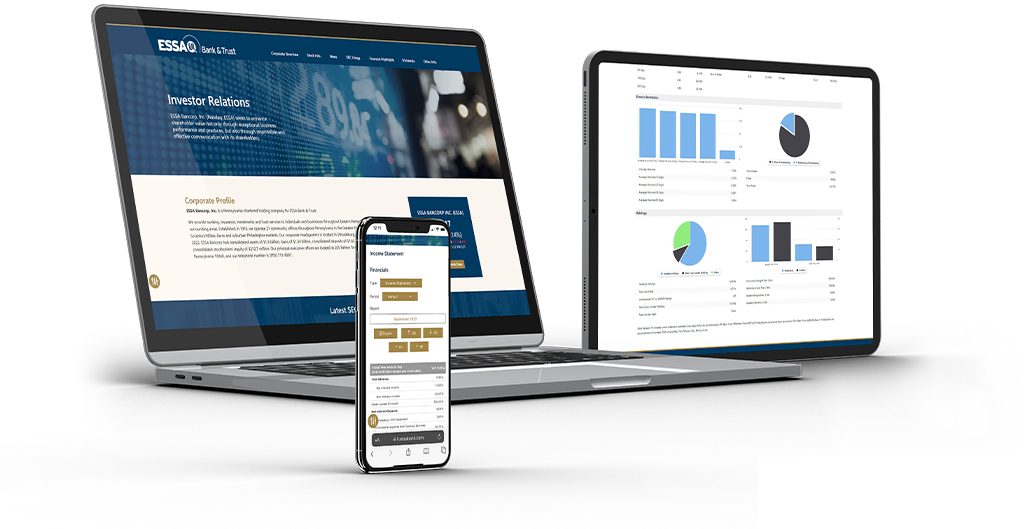Table of Contents
- Introduction to Investor Relations Websites
- Essential Elements for a Successful Investor Relations Website
- Best Practices for User-Friendly Design
- Leveraging Technology for Enhanced User Experience
- Importance of Mobile Optimization
- Guidelines for Effective Content Management
- Ensuring Accessibility and Compliance
- Measuring Success and Continuous Improvement
An effective investor relations website should provide clear, accurate information, be easy to navigate, and maintain transparency. Key strategies include offering comprehensive financial data, utilizing responsive design for mobile access, and ensuring regular updates. Engaging content and interactive features also help build trust and attract investors.
Introduction to Investor Relations Websites
An IR website is more than just a digital business card for companies. In today’s increasingly transparent corporate environment, these sites are vital communication tools for engaging with investors. Effective investor relations websites can significantly enhance a company’s image by promoting transparency and providing investors easy access to crucial information. They often house financial reports, investor presentations, and other pertinent data to build long-term trust and stakeholder relationships.
Given the digital shift that emphasizes accessibility and information at one’s fingertips, the role of investor relations websites has become more pronounced. Effective platforms offer real-time updates and facilitate feedback loops between the company and its investors, thus fostering a more inclusive and interactive communication process.
Essential Elements for a Successful Investor Relations Website
A top-tier investor relations website stands on three main pillars: comprehensive disclosure of financial information, a compelling and consistent company narrative, and an intuitive, user-friendly interface. Together, these elements create a transparent window into the firm’s operations, allowing stakeholders to understand the company’s performance and prospects clearly.
Such sites often include detailed financial reports, press releases, and management discussions to disseminate information successfully. Transparency in these areas is non-negotiable, as it builds trust and affects investor decision-making. The logical presentation of this data ensures that even complex information is accessible, aiding investors in making informed choices.
Best Practices for User-Friendly Design
The design of an investor relations website can make or break the user experience. Good design establishes a visual hierarchy, guiding users naturally through the site. Aesthetics should work in tandem with functionality, ensuring that the site is pleasing to the eye and easy to navigate. Intuitive navigation structures and clear calls to action are essential for engaging users effectively.
As indicated by Investopedia, integrating user-centered design elements like advanced search functionalities and breadcrumb trails can significantly enhance the user interaction process. These design aspects not only improve accessibility but also encourage users to stay longer and return frequently, thereby increasing the website’s overall success.
Leveraging Technology for Enhanced User Experience
Technology advancements have significantly enhanced investor relations websites’ functionalities, revolutionizing how corporations present their financial stories. Interactive elements such as real-time stock price updates, downloadable earnings reports, and integrated social media links offer stakeholders a richer, more engaging experience.
Implementing such innovations ensures the immediate dissemination of pertinent information and improves the site’s responsiveness. Automated systems can enhance this by providing alerts and notifications concerning updated financial data or corporate announcements, allowing investors to react quickly to changes.
Importance of Mobile Optimization
With more people depending on mobile devices to get information, websites must be optimized for mobile interaction. Mobile optimization entails building interfaces that shift fluidly to multiple screen sizes and orientations without compromising functionality or aesthetic appeal.
This involves attention to specifics like touch-friendly navigation, quick loading speeds, and legible fonts. These aspects are critical in enhancing the user experience on mobile devices and ensuring that the site reaches a broader audience. Proper mobile optimization reduces bounce rates and increases the likelihood of sustained engagement, ultimately contributing to higher user satisfaction.
Guidelines for Effective Content Management
Managing content on an investor relations website is a constant endeavor crucial for maintaining the relevance and accuracy of shared information. A sound content management strategy involves routine updates and audits, ensuring the website reflects current data and narratives.
Effective content management also includes strategic planning around news releases, financial updates, and stakeholder communications, ensuring they consistently align with the company’s broader communication goals. This level of organization reflects a professional image and sustains investor engagement over time.
Ensuring Accessibility and Compliance
Ensuring website accessibility is morally imperative and broadens the spectrum of people who can participate with the site. Compliance with accessibility standards, such as those provided by W3C, is vital for creating an inclusive environment where all investors can access and understand the information, regardless of disabilities.
Moreover, compliance with financial reporting regulations is integral to maintaining organizational credibility. Meeting these standards helps avoid reputational risks and legal challenges, sustaining trust among investors and the general public.
Measuring Success and Continuous Improvement
To gauge the effectiveness of an investor relations website, it is essential to employ analytical tools that measure user engagement, traffic flow, and content interaction. These insights help identify strengths and areas needing improvement, offering a roadmap for strategic adjustments.
By regularly analyzing these metrics, companies can make informed decisions to refine their websites and customize content strategies that align better with investor needs and expectations. This continuous improvement cycle ensures the site remains a valuable resource for current and potential investors.
